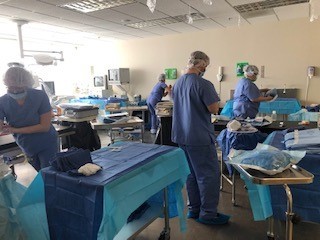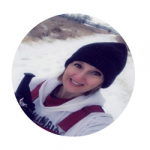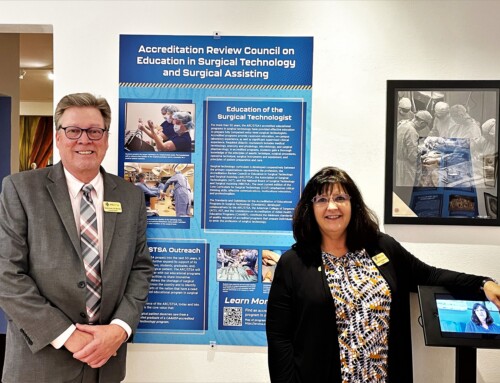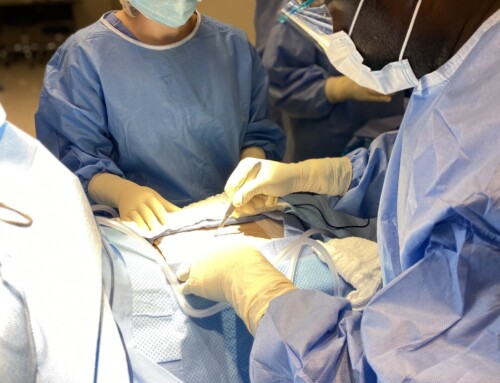By Kendall Woods, PhD, CST
In its simplest form, a community partnership is a group of people working toward the same goal. For educators, this goal is to have successful student outcomes. Our partners share the same goal, too, as they are looking for new employees and want to add to the students’ curriculum, to help broaden their learning experience.
Students’ lives are multifaceted and complex; incorporating a community-driven element into the learning curriculum helps broaden their experiences and, in turn, contributes to their overall success. Community partnerships can help strengthen, support and better align learning goals with the curriculum. These partnerships also motivate students to think about outcomes in new ways and allow educators to continuously adapt how they teach policies and practices.
In setting up these partnerships, real-world experiences are blended with didactic instruction to meet learning objectives. Educators can then design and facilitate learning experiences that further engage the student and add greater value in the field during clinicals and beyond. Studies have shown that when an instructor engages their students in an authentic way, the emphasis of instruction becomes more upon understanding and meaning. This helps students use critical thinking skills and connect on a personal level with the subject matter, ultimately strengthening their ability to better understand and remember the facts.

The community partnership program at Rasmussen University allows students to enhance their learning experience.
School partnerships help facilitate an exchange of knowledge across cultures and bridge the gap of diversity within the classroom as well. Cultivating relationships between the community, school and the students helps to build trust. This makes a positive difference in the learning environment, in relationships among students and teachers, and builds awareness of the school within the community that normally might not be recognized.
Rasmussen’s Community Partnership Program
The Rockford campus of Rasmussen University has been building strong, positive community partnerships within the surgical technology program since 2017. The 21-month long Associate Degree in Surgical Technology covers subjects that can be daunting for students to grasp, especially if unfamiliar with the health care field. The community partnership program allows for service learning to be approached in a pedagogical design to complement teaching and learning. This design process is built on the foundation of inquiry, continuous learning and discovery.
This is accomplished by offering educational outings for students in a variety of avenues. Prior to COVID-19, students attended the community partner of choice in-person. For the past 19 months, the virtual outing has been incorporated. These educational outings provide an opportunity for students to reflect upon their service-learning experiences, which tie directly to specific learning goals.
Types of Partnerships
When developing service-learning partnerships, it is important to take into consideration the specific program or course content, learning objectives and student level. Some common areas that have been addressed within the surgical technology program are as follows:
Surrounding hospital visits may include an overall tour of the facility, with a review of restricted, semi-restricted and non-restricted areas. The layout of the surgical services department may also be covered, with the emphasis on hotel or racetrack floorplan and the theory behind it.
A tour of the sterile processing department helps students understand how to put instrument trays together, as well as the step-by-step process of cleaning, disinfectant and sterilization methods, and the theory behind them.
A trip to the local county morgue allows for students to understand that cause of death and manner of death are two separate entities. It also provides students the opportunity to take autopsy call and learn more of the human anatomy, as well as tissue handling techniques, as they progress through the program.
Area speakers and virtual tours allow for students to hear from professionals within their field, ask questions and see the different aspects of surgical services from the lens of the individual staff member.
Partnering with surrounding universities and colleges can provide access to a bachelor-level cadaver lab, so that students can participate in anatomy and tissue handing. It also provides an opportunity to learn from other students in the area.
Throughout my 11 years of teaching at Rasmussen and beyond, I have found that community partnerships are a vital part of the educational process. They not only provide students with hands-on learning opportunities, but also allow them to further develop specific skill sets while simultaneously building strong ties with their community that will last throughout their time in school and beyond.
 Kendall Woods, PhD, CST, is the program coordinator for the surgical technology program at Rasmussen University in Rockford, IL. Dr. Woods has been a Certified Surgical Technologist since 2003. The surgical technology program is the second program that she has had the privilege to build and successfully direct. When Dr. Woods is not on campus, she works PRN in surgery and enjoys reading, kayaking, hiking and snow shoeing.
Kendall Woods, PhD, CST, is the program coordinator for the surgical technology program at Rasmussen University in Rockford, IL. Dr. Woods has been a Certified Surgical Technologist since 2003. The surgical technology program is the second program that she has had the privilege to build and successfully direct. When Dr. Woods is not on campus, she works PRN in surgery and enjoys reading, kayaking, hiking and snow shoeing.
References for Further Reading:
Bryan, Julia, “Fostering Educational Resilience and Achievement in Urban Schools Through School-Family Community Partnerships” (2005). Partnerships/Community. 22. https://digitalcommons.unomaha.edu/slcepartnerships/22
Epstein, J.L., & Sheldon, S.B. (2019). Moving forward: Ideas for research on school, family, and community partnerships. School, family, and community partnerships: Your handbook for action, 4th ed., Thousand Oaks, CA: Corwin.
O’Hair, M.J., Reitzug, U.C., Cate, J.M., Averso, R., Atkinson, L., Gentry, D., Garn, G., & Gaetane, J.M. (2005). Networking for professional learning communities: School-university-community partnerships enhance student achievement. Networking for professional learning communities. New York, NY: McGraw-Hill.



